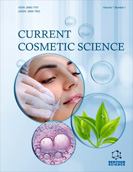Abstract
Personal care products available in the market are typically designed for the general population, assuming they will be suitable for the majority of consumers. However, customization challenges this notion by focusing on developing products tailored to individual needs, preferences, and unique factors, such as seasonal variations and geographical demands. It acknowledges that people may respond diversely to the same product.
Customization in personal care products entails the ability to tailor products to an individual's specific requirements, such as their skin type, hair type, fragrance preferences, etc. Other preferences include geographical requirements like climate, UV exposure, and cultural preferences, along with seasonal changes like winter, monsoon, summer, spring, and fall. The entire experience, including packaging, is personalized.
Currently, personal care products represent a relatively small portion, accounting for approximately 10-15% of the overall market, with non-customized products comprising 85-90%. However, recent data suggests that customization is growing at an annual rate of 15.3%, and it is projected to surpass non-customized products by 2031.
Customization offers several advantages, including a better fit for consumers' physical and mental health, targeted solutions for specific issues, and increased efficacy. Leading brands in customized personal care products have span different regions worldwide. For instance, SkinCeuticals, an American brand, offers customized skincare products tailored to address individual skin concerns and needs.
In India, Vedix and SkinKraft from IncNut Life Style are pioneering brands that provide customized personal care products based on an individual's skin and hair type, along with a Prakriti analysis. These brands offer direct-to-consumer services and are headquartered in Hyderabad, India.
The demand for customized personal care products is rapidly increasing worldwide. Beyond individual needs and preferences, further development is required to cater to seasonal and geographical requirements, enabling the creation of more effective products.
[http://dx.doi.org/10.1007/s10844-017-0465-4]
[http://dx.doi.org/10.1002/hsr2.334] [PMID: 34401521]
[http://dx.doi.org/10.1111/jocd.14467] [PMID: 35466548]
[http://dx.doi.org/10.1016/j.jobcr.2020.11.008] [PMID: 33344153]
[http://dx.doi.org/10.1016/j.jretconser.2019.102030]
[http://dx.doi.org/10.1111/jocd.15340] [PMID: 36039807]
[http://dx.doi.org/10.1002/rcs.2353] [PMID: 34786816]
[http://dx.doi.org/10.3390/cosmetics6020029]
[http://dx.doi.org/10.3390/molecules23071571] [PMID: 29958439]
[http://dx.doi.org/10.1159/000517655] [PMID: 34698033]
[http://dx.doi.org/10.1016/j.yrtph.2021.104979] [PMID: 34197870]
[PMID: 35262484]
[PMID: 36124661]
[http://dx.doi.org/10.1080/10408444.2021.1931027] [PMID: 34352182]
[http://dx.doi.org/10.3390/toxics11040392] [PMID: 37112619]








